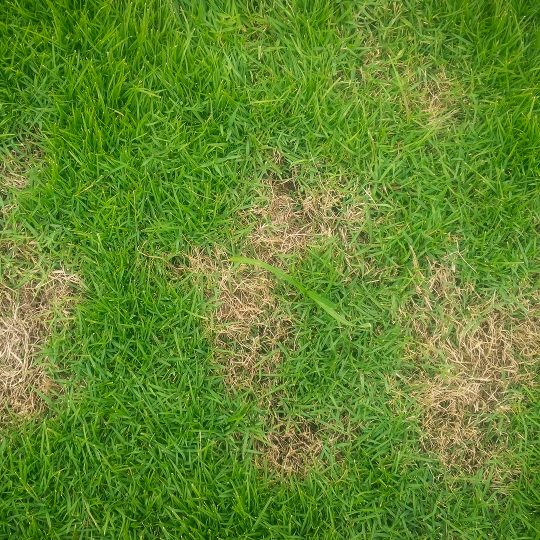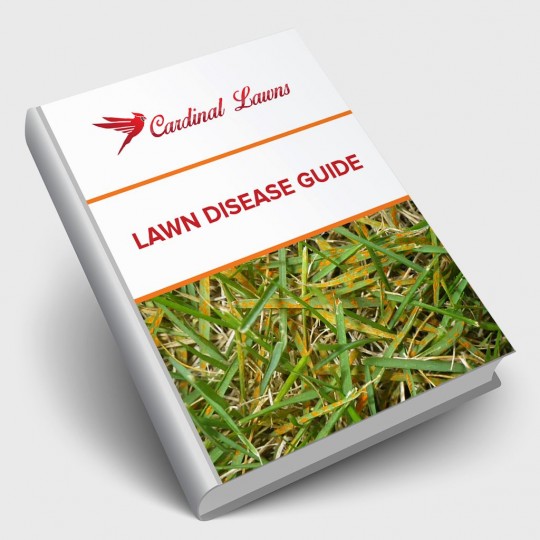Common Lawn Diseases
How to Identify, Prevent & Treat
Posted
April 15, 2021

Is your grass not looking so great? It may be trying to tell you it’s not feeling so great. Keep an eye out for some of the following symptoms and ways of preventing and treating common lawn diseases.
How Grass Gets Sick
Learning how to identify some of the most common problems with your lawn can help you treat it effectively before it’s too late. Many of these problems are fungal-related and caused by weather, pathogens, or grasses more prone to certain conditions. While you can’t control the weather, you can help prevent the other two from wreaking havoc on your lawn. For instance, know which types of grass are better suited for your area. Then make sure you’re keeping up with mowing, fertilizing, and water schedules. The less stress on your grass, the greener it will be.
Common Lawn Diseases
When trying to diagnose any disease, what do you look for? Symptoms. Grass also shows certain signs of distress. Watch for the following signs to help determine which treatment plan is best.
Brown Patch. During the spring and fall, circles of dead, sunken grass up to three feet wide appear. The perimeter of the circle may appear grey from the darkened, dead grass blades. Warm weather, high humidity, excess water, and over-fertilizing cause this disease to spread.
Dollar Spot. In late spring through the fall, warm temperatures, excessive moisture, and under fertilizing lead to yellowish, silver-dollar-size circles that eventually merge into large, irregular blocks. You may even notice cobweb-like growth in the morning light.
Leaf Spot. When humidity is high but you mow too short, your grass may start to show elongated, oval spots with dark purple-brown margins and brown centers. The crowns and roots of the blades begin to rot as your lawn continues to thin and die out.
Gray Leaf Spot. Small, bleached grass blades with dark brown edges form small, irregular patches across your lawn that eventually join together to form large areas of damage. High temperatures and precipitation trigger this disease, while poor air circulation and too much water and fertilizer cause it to spread.
Pythium. If the soil is compacted and you over-fertilize and water, you could start to notice greasy-looking leaves that stick together, rotting roots, and circles of withering, blackened grass blades along areas where water flows.
Red Thread. Red or bleached-looking patches on grass blades wither from the tips as reddish-pink threads bind blades together. You’ll also notice red spores on your shoes, lawnmowers, and any other tools that come in contact with the disease, especially in shady areas. This is a sign of too much thatch, compacted soil, poor air circulation, and under-fertilizing.
Rust Lawn. In times of drought and high humidity, irregular patches of weak, thinning grass develop yellow, rust-colored specks that can also transfer to tools, shoes, and mowers.
Snow Mold. If your grass has been covered by snow for long periods and poor drainage drowns the yard, you may start to spot small, circular, pinkish spots spread across the grass.
Summer Patch. If you mow too low over compacted soil, circles of tan-colored dead grass may appear around patches of healthy-looking grasses in their centers.
Preventing and Treating Common Lawn Diseases
The easiest way to prevent lawn disease is to help keep your lawn healthy:
- Choose the right grass seed for your area
- Test your soil to make sure there are enough nutrients
- Water, fertilize, and mow properly
- Dethatch and aerate soil regularly
Treat your lawn at the first signs of disease to prevent further damage. Certain pesticides and herbicides may help contain the issue, but only if you know you’re treating the right thing. Contact Cardinal Lawns to help with identification and treatment options. The more you can help prevent disease and the earlier you can treat it, the better off your lawn will be.

Download Your FREE Lawn Disease Guide
Even the most manicured landscapes are susceptible to lawn disease. Take some time to learn about identification and removal before one takes over your lawn. This handy guide teaches you how to spot common lawn diseases as well as how to properly treat them.